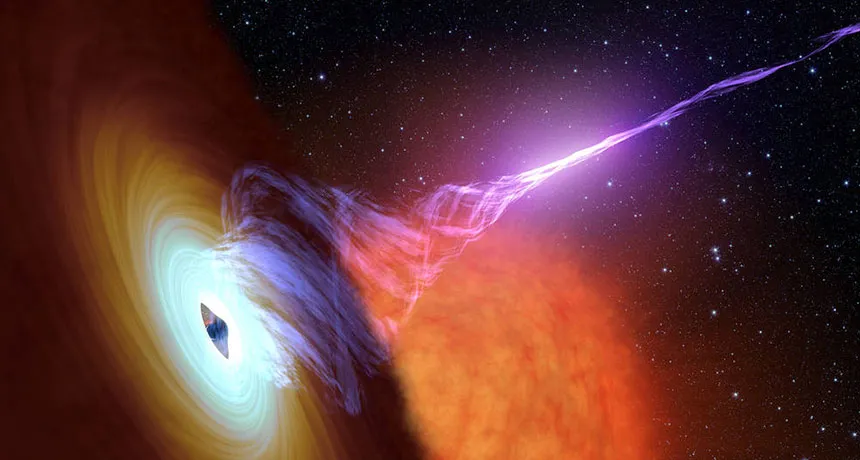
HIT THE GAS Jets from supermassive black holes, like the one shown in this artist’s illustration, could be ultimately responsible for three different types of enigmatic high-energy particles.
JPL-Caltech/NASA

HIT THE GAS Jets from supermassive black holes, like the one shown in this artist’s illustration, could be ultimately responsible for three different types of enigmatic high-energy particles.
JPL-Caltech/NASA